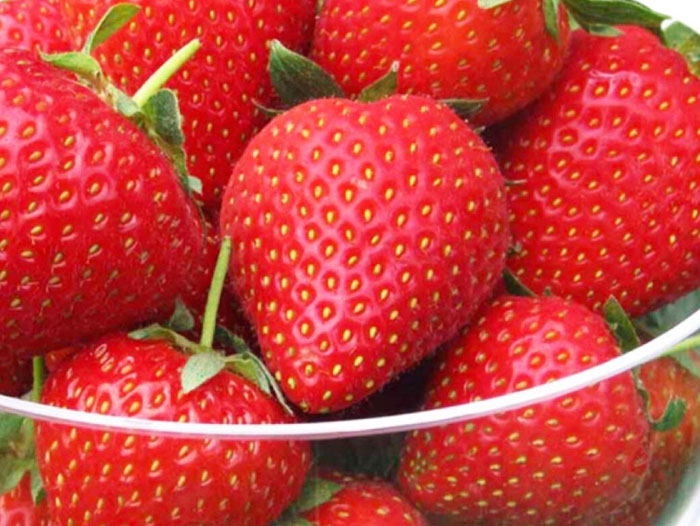The Plight of the Tristar Strawberry
August 7, 2019 | 2 min to read

Most local strawberry connoisseurs are familiar with the Tristar, Greenmarket’s small, sweet answer to the supermarket’s transcontinental behemoths. But few are aware of the behind-the-scenes drama that has put the future of this superfruit in jeopardy. The David in this tale is Rick Bishop of Mountain Sweet Berry Farm, who in 1985 crashed the Union Square farmers’ market with his Cornell University roommate Gerald Posner and a pickup truck full of Tristars and has been selling them to besotted chefs and discerning Greenmarket shoppers ever since. Goliath would be Planasa, the multinational horticultural corporation that in 2017 acquired Norcal, the California nursery that supplies Bishop’s virus-free bare-root plants, the raw material of commercial berry farming, and dropped Tristars from its product roster this past March.
To grasp the magnitude of this business decision, one must first appreciate the outsize position the tiny Tristar occupies in the greater metropolitan area’s local-and-seasonal-produce hierarchy. It is hands down the No. 1 strawberry among what Bishop refers to as the Greenmarket contingent of “little old ladies and French chefs who run the show.” For these partisans, “strawberry” equals “Tristar”; they accept no substitutes. The day-neutral variety was bred in Maryland from a wild Utah mountain berry crossed with strains from New Jersey and California, and it’s prized as much for its vivid flavor and dense red flesh as for the fact that it can bear fruit from May through October (hence its name, star of three seasons). In short, it is everything the mainstream specimen is not: diminutive, aromatic, sweet through and through. But also: low-yield (a mother plant puts out seven runners, or baby plants, versus a stronger variety’s 20 to 24); too delicate to transport great distances; and labor-intensive, both to grow and to pick (there are 32 to 50 in a pint, compared to 12 to 15 California-grown jumbos).
To read the rest of the story, please go to: Grub Street
